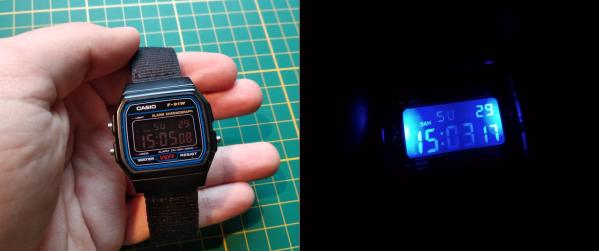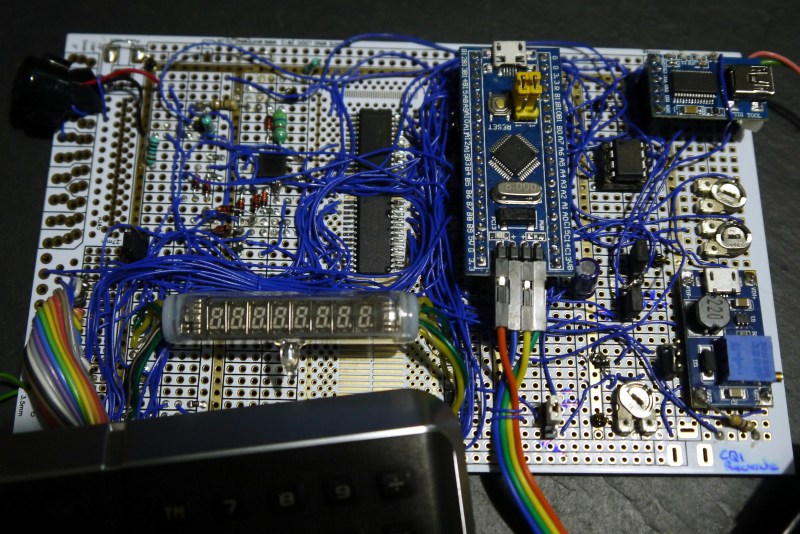1985 saw the release of the Casio SK-1, a compact sampling keyboard that brought the technology to a lower price point than ever before. However, one drawback of this was that it comes stock with only a 2.5 octave keyboard. [Jonas Karlsson] wanted a little more range out of the instrument, so set about hacking in his own octave mod.
The build consists of fiddling with the SK-1’s microprocessor clock to change the pitch of the notes generated by the instrument. The original clock is generated by a simple LC circuit, which in this mod is fed to an inverter, and then a pair of flip-flops to divide the clock by four. The original clock and the divided version are then both sent to a mux chip. With the flick of the switch, either the original or downshifted clock can be sent to the microprocessor.
With the slower clock feeding the microprocessor, all the notes are downshifted an octave. The resulting sound, which you can listen to on Soundcloud, is similar to what you get when chopping down sample rates. It bears noting, however, that as this mod changes the master clock, other features such as rhythms are also effected.
It’s a great mod which gives the instrument a gloomier, grittier sound on demand. The Casio SK-1 has long been prized for its hackability; we’ve seen them completely worked over in previous mods. If you’ve got your own twisted audio experiments cooking up in the workshop, be sure to drop us a line.









 Both the takedown notice and counter-notice are binding legal documents, sworn under oath of perjury. Notices and counter-notices can be used or abused, and copyright law is famously full of grey zones. The nice thing about GitHub is that they publish all DMCA notices and counter-notices they receive, so
Both the takedown notice and counter-notice are binding legal documents, sworn under oath of perjury. Notices and counter-notices can be used or abused, and copyright law is famously full of grey zones. The nice thing about GitHub is that they publish all DMCA notices and counter-notices they receive, so 










